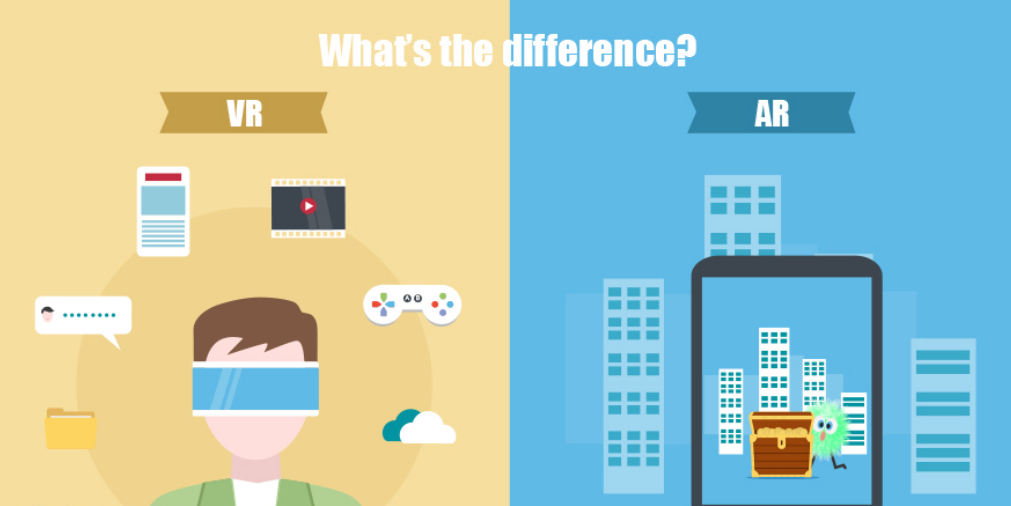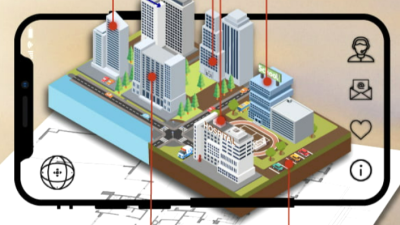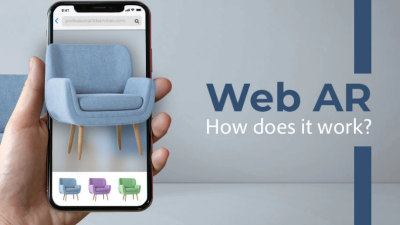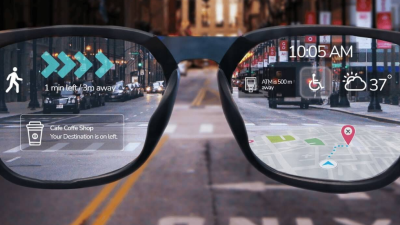The digital landscape continues to evolve at a remarkable pace, blurring the boundaries between physical and virtual experiences. Among the most transformative technologies in this evolution are augmented reality (AR) and virtual reality (VR). Though often mentioned in the same breath, these technologies represent distinctly different approaches to how we interact with digital content and our surrounding environment.
Understanding the nuances between AR and VR matters increasingly as these technologies reshape entertainment, education, healthcare, retail, and countless other sectors. Their fundamental differences determine not just technical implementation, but also which applications each best serves and how users experience digital content in dramatically different ways.
Augmented Reality: Enhancing Our Existing World
Augmented reality fundamentally works by overlaying digital elements onto our view of the physical world. The key characteristic of AR experiences is that they maintain the user’s connection to their actual surroundings while enhancing that reality with contextual information or virtual objects.
When you use AR, you’re still present in and aware of the real environment around you. The technology simply adds an extra layer of information or interactivity to what you’re already seeing. This additive approach means AR devices typically need transparency—either through camera feeds with overlays on screens or specially designed glasses that allow vision of the physical world while projecting digital elements.
AR applications span from practical utilities to entertainment. Navigation apps that overlay directional guidance onto street views, retail applications that let shoppers visualize furniture in their actual living rooms, and industrial maintenance systems that provide visual instructions overlaid on machinery all leverage AR’s ability to enhance rather than replace reality.
The technology’s strength lies in its contextual relevance. Because AR maintains connection with physical surroundings, it can provide information precisely when and where it’s most useful. This makes AR particularly valuable for situations where awareness of the real environment remains essential.
Virtual Reality: Creating Immersive New Worlds
In stark contrast to AR’s enhancement approach, virtual reality creates completely simulated environments that replace the user’s view of the physical world. When experiencing VR, users are immersed in digital worlds that encompass their entire field of vision and often incorporate spatial audio to further the sense of presence.
VR hardware typically blocks out the physical environment entirely. Headsets cover the eyes completely, replacing natural vision with screens displaying computer-generated environments. The most sophisticated systems track not just head movements but also body position and hand gestures, allowing natural interaction with virtual objects and spaces.
This complete immersion makes VR uniquely suited for applications where transporting users to different places or situations is desirable. Training simulations where practitioners can safely experience dangerous scenarios, architectural walkthroughs of buildings not yet constructed, and gaming experiences that transport players to fantastic realms all benefit from VR’s capacity to create presence in entirely fabricated environments.
According to research from the Virtual Reality Society, the psychological impact of well-designed VR can be so strong that users experience genuine physiological responses to virtual stimuli, highlighting the technology’s unparalleled immersive potential.
Technical Requirements: Different Demands
The distinct approaches of AR and VR create divergent technical requirements for both hardware and software.
AR systems must understand the physical environment to accurately place digital content. This environmental awareness necessitates sophisticated computer vision technology capable of identifying surfaces, tracking spatial relationships, and maintaining stable positioning of virtual elements as users move. AR hardware—whether smartphones, tablets, or specialized glasses—requires cameras and sensors to capture the physical world, along with displays that either show camera feeds with overlays or project content onto transparent surfaces.
VR systems focus instead on creating convincing simulations. This demands high-resolution displays positioned extremely close to the eyes, precise motion tracking to prevent dissonance between physical movement and visual feedback, and powerful graphics processing to render complex environments at high frame rates. Unlike AR, VR must generate entire worlds rather than simply placing objects within existing ones.
Both technologies benefit from advancements in spatial computing, but AR places greater emphasis on environmental understanding while VR prioritizes immersive rendering and tracking precision.
User Experience: Connection vs. Immersion
Perhaps the most meaningful distinction between AR and VR lies in how users experience each technology.
AR experiences maintain social connection. Users can still see and interact with others around them, making AR suitable for collaborative activities and situations where communication remains important. The technology integrates into existing workflows and environments rather than replacing them, allowing for more casual, intermittent usage patterns. As we’ve previously discussed in our guide to implementing AR marketing strategies, this integration into normal activities makes AR particularly valuable for retail and promotional applications.
VR experiences, by contrast, temporarily disconnect users from their physical surroundings. This isolation creates unparalleled immersion but limits social interaction to what can be recreated virtually. VR typically demands dedicated time and space—users need safe, unobstructed areas to move within while wearing headsets that block their vision of actual surroundings. This higher commitment threshold makes VR better suited for intentional, focused experiences rather than casual integration into daily activities.
Mixed Reality: The Blending Middle Ground
Between pure AR and complete VR lies mixed reality (MR), which represents a spectrum of experiences that blend elements of both approaches. Mixed reality allows virtual objects to not just overlay the real world, but actually interact with it in meaningful ways.
In MR experiences, digital elements can be occluded by physical objects, respond to real-world lighting conditions, and even influence or be influenced by physical components of the environment. This deeper integration enables more convincing and useful applications that truly bridge digital and physical realms.
The development of sophisticated MR platforms like Microsoft’s HoloLens has demonstrated how blending virtual and physical elements can create powerful tools for design, education, and industrial applications. As both AR and VR technologies mature, the boundary between them continues to blur, with many applications incorporating elements from across the reality-virtuality continuum.
Use Cases: Different Technologies for Different Needs
The fundamental differences between AR and VR naturally lead each technology toward distinct applications where their particular strengths shine.
Augmented reality excels in situations where contextual information enhances tasks or experiences in the real world. Medical procedures where vital signs and imaging data appear in surgeons’ field of view, manufacturing processes guided by visual instructions projected onto work surfaces, and retail experiences where products can be virtually tried before purchase all leverage AR’s ability to provide just-in-time information without disconnecting users from their surroundings.
Virtual reality proves most valuable when complete immersion benefits the experience. Therapeutic applications treating phobias or PTSD by carefully controlled exposure to triggering scenarios, training for dangerous jobs like firefighting or deep-sea operations, and entertainment experiences that transport users to otherwise inaccessible locations or fictional worlds all capitalize on VR’s unmatched sense of presence.
Both technologies continue finding new applications as developers and industries recognize which approach—enhancement or immersion—better serves their particular needs.
Hardware Ecosystems: Current Landscape
The divergent requirements of AR and VR have created distinct hardware ecosystems, though convergence seems increasingly likely as technology advances.
Augmented reality currently reaches its widest audience through smartphones and tablets with AR capabilities built into their camera systems. Dedicated AR headsets like Microsoft’s HoloLens and Magic Leap offer more sophisticated experiences but remain primarily focused on enterprise applications due to cost and form factor considerations. The long-anticipated arrival of consumer-friendly AR glasses continues progressing, with major technology companies working toward lightweight, socially acceptable designs.
Virtual reality hardware has evolved into several distinct categories. Tethered headsets connected to powerful computers deliver the highest quality experiences. Standalone VR headsets with built-in computing offer greater convenience with moderate performance compromises. Mobile VR solutions where smartphones slot into simple headset shells have largely been supplanted by dedicated standalone devices offering superior tracking and interaction capabilities.
As miniaturization advances and processing power increases, many industry experts anticipate eventual convergence toward multipurpose headsets capable of delivering experiences across the entire mixed reality spectrum.
Development Considerations: Different Approaches
Creating content for AR versus VR involves fundamentally different design philosophies and technical considerations.
Augmented reality development must account for unpredictable real-world environments. Designers cannot control lighting conditions, available surfaces, or surrounding distractions. AR experiences must be robust enough to function across diverse physical contexts while remaining unobtrusive enough to complement rather than overwhelm reality. This requires thoughtful interface design that provides value without demanding constant attention.
Virtual reality development offers greater environmental control but demands meticulous attention to comfort and immersion. Designers must create complete worlds with consistent internal logic, manage user movement and interaction in ways that prevent discomfort, and carefully consider how to direct attention in 360-degree environments. Even small inconsistencies or performance issues can break immersion or, worse, induce motion sickness.
Both technologies benefit from thoughtful consideration of how humans naturally interact with their surroundings, though they approach this challenge from opposite directions.
Future Trajectories: Converging Paths
While AR and VR represent distinct approaches today, their development trajectories suggest eventual convergence toward more flexible systems that span the entire mixed reality spectrum.
Advances in display technology, environmental understanding, and miniaturization are enabling devices capable of switching between augmentation and immersion based on user needs. The concept of “passthrough VR,” where cameras on VR headsets provide views of the real world enhanced with digital elements, represents one approach to this convergence. Similarly, AR glasses with increasingly immersive capabilities begin to offer experiences approaching VR’s level of engagement.
The ultimate expression of this convergence may be what some technologists call “the glasses”—lightweight, socially acceptable eyewear capable of everything from subtle information overlays to complete virtual immersion, adapting seamlessly to user needs throughout the day.
Conclusion: Complementary Technologies, Not Competitors
Understanding the differences between augmented reality and virtual reality reveals that these technologies aren’t competitors but complementary approaches addressing different needs and scenarios. AR enhances our existing reality with contextual digital elements, maintaining our connection to the physical world. VR creates entirely new realities, temporarily replacing our physical surroundings with immersive virtual environments.
Both technologies continue rapidly evolving, finding new applications across industries while becoming more accessible, powerful, and refined. As the hardware and software underpinning these experiences mature, we can expect increasingly sophisticated implementations that further showcase the unique strengths of each approach.
Rather than asking which technology will ultimately prevail, the more insightful question becomes which approach—enhancement or immersion—best serves each particular use case. In many situations, the answer may be “both,” with users moving fluidly between augmented and virtual experiences as their needs and contexts change throughout the day.
The future of human-computer interaction clearly involves more natural, spatial computing paradigms that transcend traditional screens and input devices. Whether enhancing our world with contextual information or transporting us to entirely new ones, AR and VR represent fundamental shifts in how we’ll interact with digital content in the coming decades.





